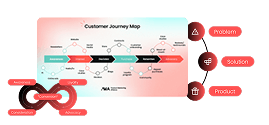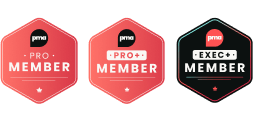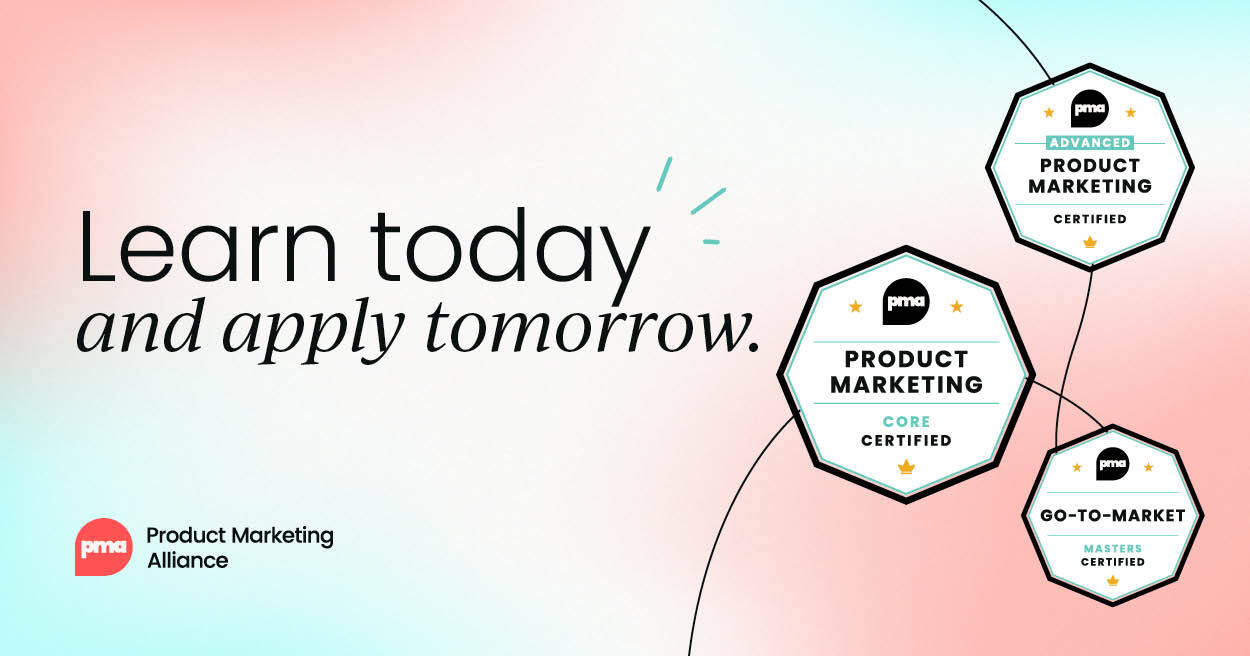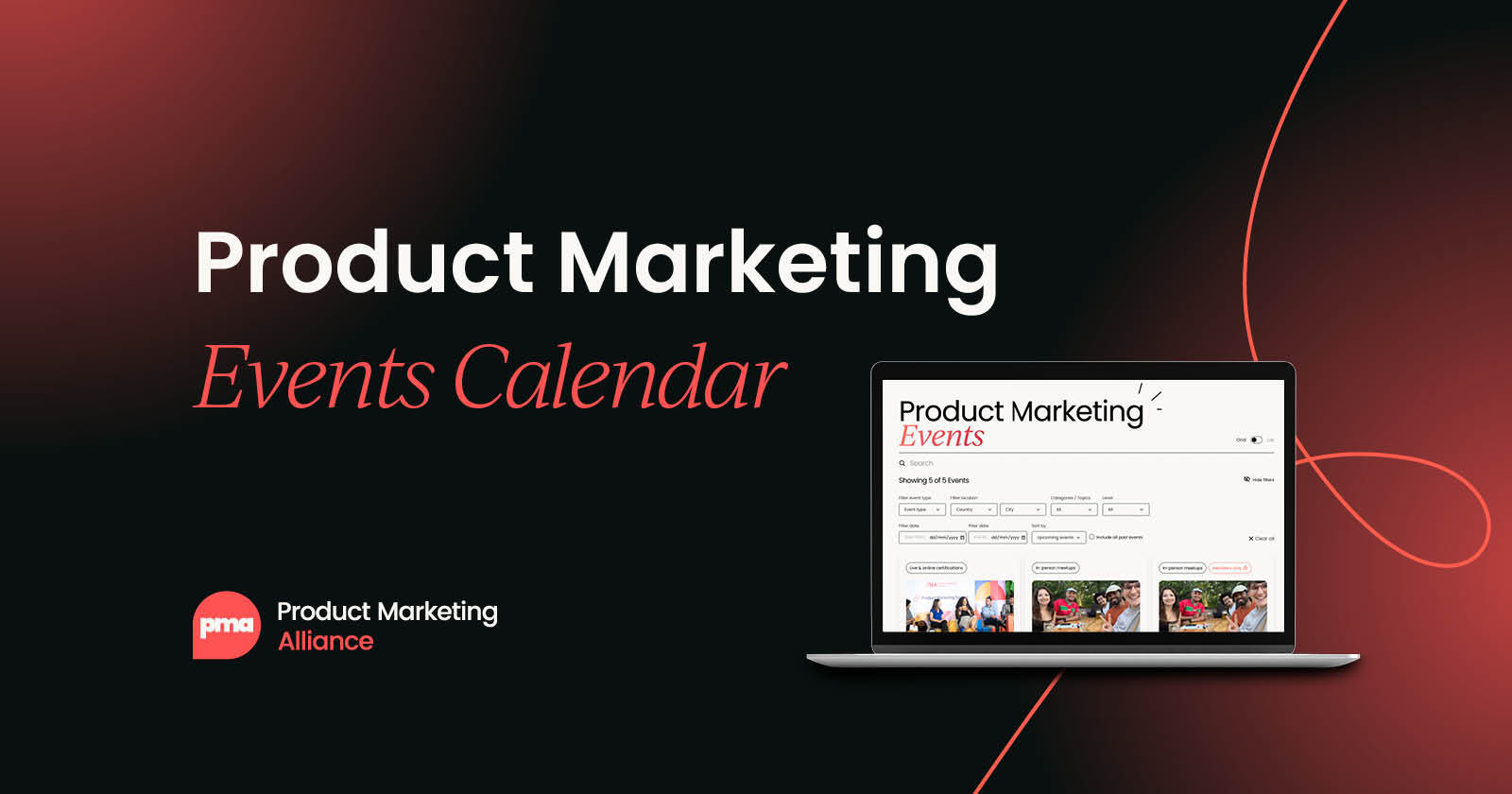If, years ago, you were looking for the least likely person to become a marketing leader, it was probably me. I grew up as an East Asian immigrant, and I fit the stereotypes – I was quiet, followed the rules, and focused on my studies.
Fast forward to today, and I’ve spent a third of my career at McKinsey and two-thirds at Microsoft. My passion lies in product marketing, and I’ve led teams for mature products like Project, SharePoint, OneDrive, and Dynamics 365, as well as newer innovations like Viva, the first employee experience platform in the industry.
A few years ago, I was honored with Microsoft’s Pinnacle Award, which is given to just 30 employees out of over 200,000. This recognition wasn’t just for my business impact, but for how I’ve influenced the people I work with.
I’ve always tried to be the kind of leader who inspires and supports others, much like a partner I worked with early in my career. She pushed me to be my best, while still being incredibly caring and supportive – a model I’ve tried to follow ever since.
So, how did I get from that quiet, studious kid to a leader? I had to become a student of leadership. I don’t fit the traditional mold of someone with natural charisma or extroversion, so I had to learn. I read books, listened to podcasts, and observed great leaders throughout my career.
My goal today is to share some of what I’ve learned along the way. Whether you’re just starting out and never saw yourself as a leader, or you’re a seasoned executive, I hope you’ll walk away with at least one or two ideas to add to your toolkit.
Let’s dive in!
Three powerful leadership principles
When Satya Nadella took over Microsoft nearly two decades ago, he and the senior leadership team partnered with the NeuroLeadership Institute to distill the essence of leadership into three core principles.
They condensed a list of over 100 potential guidelines down to just three simple but powerful ideas:
- Create clarity: This principle focuses on aligning everyone toward developing the most compelling products and solutions for customers.
- Generate energy: It’s about fostering innovation and ensuring that the team’s enthusiasm and creativity meet the fast-evolving needs of the industry.
- Deliver success: This principle reminds us to focus on what truly matters – achieving meaningful outcomes.
These principles have stood the test of time. When I first joined Microsoft in the 2000s, our stock price was about $23. Just the other day, it hit an all-time high of $441. Safe to say the principles – and the culture they’ve built – are working.
So, let’s explore six practical tips based on these ideas, plus four healthy mindsets that can elevate your leadership.
Creating clarity: Synthesizing complexity
The first principle, creating clarity, is all about synthesizing complex information, ensuring a shared understanding, and defining clear courses of action.
Chances are, your product marketing team is being pulled in many different directions. Things are changing rapidly, especially with the rise of AI, and it can be tough to stay aligned with stakeholders. However, creating clarity is possible – it’s about implementing simple, effective systems.
Here are some tips to get you and your teams on the path to clarity.
Tip #1: Manage by OKRs
“We must realize – and act on the realization – that if we try to focus on everything, we focus on nothing.”
– John Doerr
One of the most powerful tools for creating clarity is managing by OKRs (objectives and key results). OKRs help you align your team’s efforts around a few key priorities.
Objectives are qualitative, aspirational goals, while key results are the measurable drivers that help achieve those objectives. The initiatives are the actions or projects your team takes to reach these outcomes.
In product marketing, I usually organize my team's objectives by product or funnel stage. For example, you might focus on driving awareness or improving perception for one product, while another objective could center around generating specific revenue outcomes.
Within each objective, my team discusses a mix of short-term key results (like hitting a certain positive sentiment rate on an upcoming feature launch) and long-term key results (like getting leadership sign-off on a product strategy paper). This balance ensures you’re hitting immediate goals while also securing your team’s future.

One of the key strengths of OKRs is that they force you to prioritize.
When everything is important, nothing truly is. The things that don’t make the cut – what I call the “no OKRs” – are just as important because they clarify what’s not a priority right now.
OKRs also promote shared accountability by allowing you to create joint objectives with partner teams, ensuring everyone is aligned and working toward the same goals.
Studies have shown that when companies use OKRs, 96% of employees understand how their work ties to the company’s overall priorities, compared to just 60-70% when OKRs aren’t in place.
Finally, OKRs aren’t just about business results. My peers and I almost always have an objective related to team health. For instance, you might set a key result like ensuring every team member has a career check-in every six months.
Tip #2: Get into an operating tempo
"You don’t rise to the level of your goals, you fall to the level of your systems."
– James Clear
The next tip is all about establishing a rhythm for both long-term strategic planning and regular check-ins. Typically, you’ll want to have an annual or semi-annual review of your overall strategy, along with quarterly, monthly, and even weekly touchpoints to track your KPIs or OKRs. The goal is to see how you're progressing, make necessary adjustments, and stay aligned with your objectives.
Now, you might think, "Isn’t this just about setting up more meetings?" In a way, yes, but there’s more to it than that – it’s about establishing systems that keep you on track towards your goals. Without solid systems in place, achieving your OKRs becomes a matter of luck rather than deliberate action.
So, how do you make sure all these planning sessions and check-ins are productive? Here are a couple of bonus tips to guide you:
- Embrace messy meetings: Don’t focus on having the perfect presentation every time. Instead, use that time to problem-solve together, focusing on learnings, insights, and actions. Dive into the drivers behind the KPIs rather than overwhelming everyone with endless data.
- Remember that not everything needs to be a meeting. Use a variety of communication and collaboration channels. You’d be amazed at how much can be done asynchronously through chat.
Generating energy: Inspiring growth and optimism
The next big focus is generating energy, which means creating a culture where optimism, creativity, and growth thrive. It’s about building an environment where everyone feels they can do their best work and fostering a team that’s stronger tomorrow than it is today.
That said, we know that employee burnout is still a significant issue. Engagement levels remain shockingly low, despite decades of discussion on how to improve them. As leaders, we often bear the brunt of this problem. We’re balancing the demands of managing up to our executives and down to our teams, constantly pulled in multiple directions.
However, from my decades at Microsoft, I believe it’s possible to stay sane, even in the most fast-paced, changing environments. Let me share a couple of tips to help you do that.
Tip #3: Manage your time
“Time management is executive management.”
Time management isn’t about organizing your schedule – it’s about managing your energy and making sure you’re focused where your unique value as a leader matters most.
I’ve observed how different leaders and executives approach their time and picked up a few handy strategies:
- Balance external and internal time: Think about how much time you want to spend externally – meeting with customers, attending industry events, or engaging with the press – versus internally, working with your team, or getting work done. Being the face of your product is important, but you also need to balance that with the demands of running your team effectively.
- Split your time between team-focused activities and individual contributor work: As a leader, much of your time will be spent managing and coaching your team, but there will still be moments when individual work is crucial. For example, strategic decisions or projects that only you can lead will require your direct involvement. Finding the right balance between supporting your team and doing the work only you can do is key.
- Invest time in relationships and personal growth: Building strong relationships within your team and across the organization is just as important as your day-to-day tasks. Plus, don’t forget to carve out time for your own learning and development. Whether it’s attending events or brushing up on new skills, continuous growth ensures you stay effective as a leader.
- Stick to your plan: Once you’ve decided how to allocate your time, commit to it. Use tools like color-coding your calendar to visually track how you're spending your time, and regularly check in to see if you’re hitting your targets for each category – whether it’s external, internal, team-focused, or personal.
By being intentional with how you manage your time, you’ll not only maintain your energy but also help your team do the same, creating a more energized and effective work environment.
Tip #4 Create team agreement and ethos
“Coming together is a beginning; keeping together is progress; working together is success.”
– Henry Ford
One of the most valuable tips I can share is the importance of establishing a team agreement and ethos. Think of your team ethos as the DNA of your group – it’s a set of shared values that fuel the culture and shape the ethics of how you work together.
That might sound a bit abstract, so let me give you a concrete example from my marketing organization. We have five core values that make up our team ethos: purpose, accountability, respect, integrity, and balance. These aren’t just words on a wall; they create the psychological safety and trust that binds us together. They form the shared norms and “glue” that helps everyone feel connected and aligned.
Alongside team ethos, we have a team agreement, which is like the rules for how we operate together. This covers things like when people should be available, communication norms, how we run meetings, how we collaborate, and most importantly, how we commit to balancing our well-being.
In hybrid work environments, where teams are often spread across different time zones, these agreements are critical.
What makes this system work is a balance between top-down and bottom-up contributions. While some ethos and agreements come from leadership, there’s also space for the team to shape how we live out those values.
Let me share a couple of my favorite examples:
- To support integrity, my team came up with an agreement to actively give gratitude and recognition to everyone who contributes to a project. This is so important, especially during major product launches where it takes a coordinated effort from all sides. Taking the time to recognize and appreciate each other’s work helps reinforce integrity and team unity.
- Another great example is our virtual water cooler chat on Teams. It’s an ongoing thread where team members share everything from project updates and key learnings to personal stories and vacation highlights, helping us stay connected, even when working remotely.
The word “culture” can sound vague, but really, it’s just the sum of how people work together. When you actively design the way you work as a team, write it down, and revisit it regularly, you shape a culture that’s aligned with your values.
Delivering success: The role of product marketing
I like to think of product marketing as the hub where all the key players – product managers, developers, designers, customer support, sales, PR, and more – connect. We’re vital to driving success, both for the product and the business.
Let’s dive into some key tips for delivering that success.
Tip #5: Know the business
“However tight things are, you still need to have the big picture at the forefront of your mind”
– Richard Branson
As product marketers, we're responsible for messaging and positioning, but it’s essential to go beyond that.
We should understand how the business operates. How does your product generate revenue? How does it monetize? You should know your sales funnel inside and out – from qualified leads to conversion, retention, upsell, and cross-sell. Be familiar with the trends and drivers behind the numbers in those funnels.
It’s also crucial to be data literate. You don’t have to be a math genius, but you should be comfortable enough with the data to ask smart questions and hold stakeholders accountable when something doesn’t add up. If you notice a major change in a trend, you need to dig deeper and understand why.
This level of insight is what earns you a seat at the table for critical product and business strategy discussions.
Tip #6: Be rational
“Common sense is not so common.”
– Voltaire
In product marketing, even the most creative decisions – like messaging or producing a sizzle reel – benefit from rational problem-solving. Using a structured approach helps ensure that your decisions are sound.
Start by defining the problem clearly – what’s the problem statement? What’s in and out of scope? What does success look like? Then, break it down into manageable parts, prioritize, and focus on high-impact, high-feasibility tasks first. Adopt a hypothesis-driven mindset. Collect data, analyze it, and iterate.
This is especially crucial in today’s world, where AI is transforming not only the products we deliver but also how we market and communicate them. At Microsoft, we once thought we had all the answers, but AI has opened up new possibilities, and experimentation is now a core part of our strategy. Developing hypotheses, gathering data, and continuously iterating will be key to staying ahead.
Healthy mindsets: Cultivating growth, care, and authenticity
Now that we've explored some practical ways to create clarity, generate energy, and deliver success, let’s explore four key mindsets that can elevate your leadership.
Tip #7: Raise the bar
“Becoming is better than being.”
– Carol Dweck
No matter how experienced you are, there’s always something new to learn – whether it’s about your customers, industry, or even fresh ideas from competitors. It’s like being an athlete; you're always striving to improve and be better than yesterday.
When your team has psychological safety – which is cultivated through a strong team ethos – raising the bar becomes a motivator, not a stressor. There’s an inherent satisfaction in knowing you’ve learned something new or improved in some way. Plus, staying curious and continually learning is proven to contribute to a long, healthy, and happy life.
In the age of AI, this mindset is more crucial than ever. AI is constantly evolving, and learning how it can support us as marketers is an ongoing journey. The more we embrace it, the more effective we’ll become.
Tip #8: Take care of your people
“The growth and development of people is the highest calling of leadership.”
– Harvey Firestone
If you have the privilege of being a people manager, take that responsibility seriously and take care of your people. Study after study has shown that managers have a huge impact on employee engagement and satisfaction. Keeping your team engaged isn’t just good for people – it’s also good for business because it helps retain talent.
There are three key elements to this:
- Coaching: Support your team members by challenging them to learn and adapt.
- Modeling: Live the values and agreements you set as a team. Show by example what it means to be accountable and to uphold the team’s standards.
- Caring: Take the time to genuinely get to know each person on your team – their capabilities, aspirations, and challenges. Sometimes this means giving honest feedback, but always in a kind way that helps them grow.
If we can make a real difference in people’s lives while doing great marketing, why not?
Tip #9: Lead with who you are
“Be yourself; everyone else is already taken.”
– Oscar Wilde
We’re all wired differently, with unique strengths, personality traits, and experiences.
As I mentioned earlier, I’m an introvert – something that doesn’t fit the stereotypical image of a marketer. Early in my career, I tried to change my style based on feedback, but that wasn’t sustainable. My breakthrough came when I embraced my introversion and realized it made me a better listener and, in turn, a more inclusive leader.
Plus, my engineering background helps me think logically and make data-driven decisions. These strengths have helped me lead more effectively.
We all have something that makes us different, and I encourage you to embrace your own unique qualities. Plenty of tools, like Gallup StrengthsFinder or 360-degree feedback, can help you better understand who you are.
Lean into those strengths, and you’ll find that leading authentically is not only more sustainable, but also makes you a far more effective leader.
Tip #10: Find your purpose
“I’ve learned that people will forget what you said, people will forget what you did, but people will never forget how you made them feel.”
– Maya Angelou
Of course, we all have jobs because we need to earn a living, and that’s important. But beyond that, it’s essential to understand the business purpose you serve and, just as importantly, the “people purpose” you serve.
Why? Because tough times will come – industries change, challenges arise – and having a clear sense of purpose can give you the clarity and motivation you need to keep going through uncertainty.
For me, after nearly 14 years as a product marketer, my business purpose is to take the products I’m given and help drive the next phase of growth. I love figuring out how to push the business to a new level.
My people purpose is just as important. I get so much fulfillment from creating an environment where my teams can thrive, a place where people say, “This is one of the best places I’ve ever worked.” I hope my actions, in even small ways, can be a blessing to those around me. That’s what fills my joy bucket and keeps me going every day.
One thing I’ve learned over the years is that your day job isn’t the only place where you can use your professional skills. You can make an impact beyond the four walls of your company. Look around – many people volunteer, join boards, or contribute to their communities in meaningful ways. Sharing your expertise and skills with others can give you a broader sense of fulfillment.
That’s a wrap!
I hope that by reading about my journey and the lessons I’ve gathered along the way, you’ve found a few insights that resonate with you. Whether it’s about raising the bar, taking care of your team, or finding your deeper purpose, these are all tools that can help you navigate your own leadership path.
Remember, leadership is a continuous learning process, and with the right mindset, we can all keep growing and making a lasting impact.
This article is based on Angela Byers’s inspiring talk at the Seattle Product Marketing Summit. As a PMA member, you can enjoy the complete recording here.
Psst! If you’re looking for more ways to boost your leadership skills, why not check out Product Marketing Leadership: Certified?


















 Follow us on LinkedIn
Follow us on LinkedIn





.svg)
Start the conversation
Become a member of Product Marketing Alliance to start commenting.
Sign up now